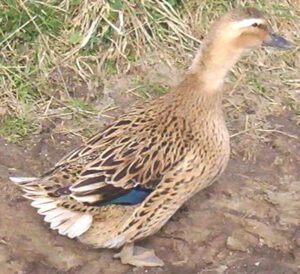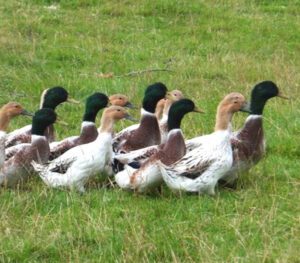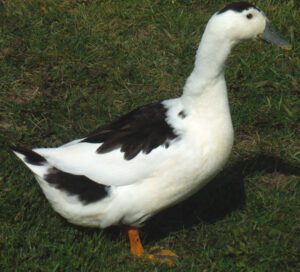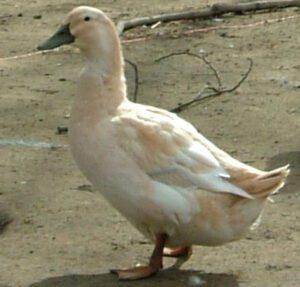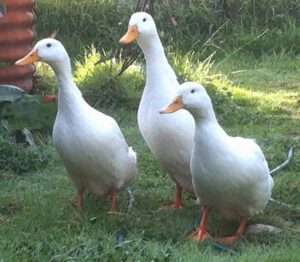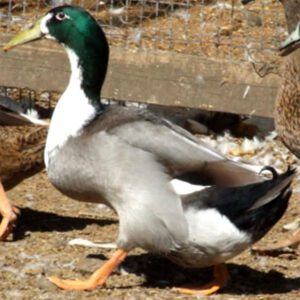The Call duck is a bantam breed of domestic duck which look similar to some other duck breeds, but are smaller in size. Call ducks are mainly raised for decoration purposes and as pets. Previously they were used for hunting, where their own calls and quacks would attract wild ducks towards the hunter’s gun.
Today such practice has almost entirely been replaced with artificial duck’s calls. Exact origin of the Call duck is not clear. Most probably it was available in Asia before arriving in Netherlands. The first recorded mentions of this breed are from the Netherlands.
In the Netherlands, the Call duck was used as a decoy and known as a Coy or Decoy Duck. Hunters were used to use the call duck’s high-pitched distinctive call to lure other wild ducks into funnel traps. The breed was first introduced to the British Isles by the 1850.
And the Call duck was one of the first six waterfowl breeds to be standardized there in 1865. But the breed became rare there by the middle of the twentieth Century.
Gray and White varieties of the Call duck were admitted into the American Poultry Association’s Standard of Perfection in 1874. And the use of call ducks for wild duck hunting was permanently banned in every state of the USA.
However, today the Call ducks are now being kept primarily as pets or for ornamental purposes. They are also very popular exhibition birds.
Physical Characteristics of Call Duck
The Call duck is a direct descendant of the Mallard duck. Although through selective breeding, the Call ducks have shorter bills and a smaller body compared to the Mallards. They are lively and charming little birds with a small body and short bill.
Their body carriage is nearly level from breast to stem. Their head is relatively large and rounded with a high crown, rising abruptly from the bill. They have large, round and alert eyes.
The eyes of the Call duck are set fairly centrally, the base of the eye in line with the top of the bill. Their neck is thick and short. Their legs are short. The legs are set middle of the body and their tail carried almost level. There are many color varieties available of the Call duck.
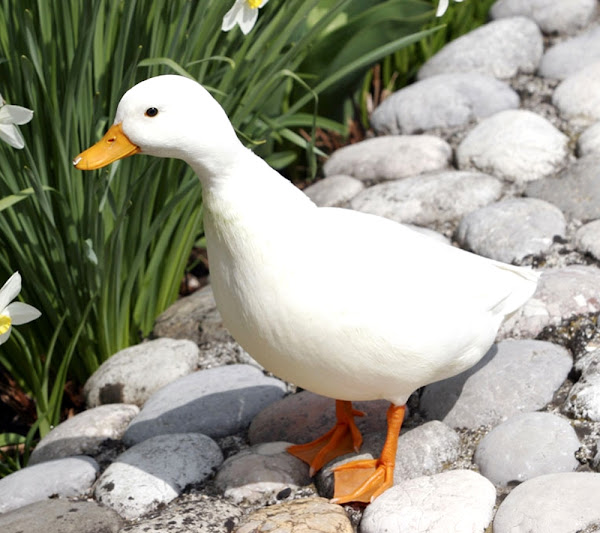
Common color varieties are White, Black, Blue Fawn, Mallard, Silver, Apricot, Dark Silver, Pied, Magpie, Bibbed. On average mature ducks weight about 0.45 to 0.6 kg, and drakes about 0.55 to 0.7 kg. Photo from Wikipedia.
Uses
The Call ducks are mainly used as an ornamental duck breed. They are also suitable for raising as pets and good for exhibition purposes.
Special Notes
Call ducks are lively and talkative. They are very noisy and their high-pitched call carries over a long distance. They are very clean and tidy birds. They will keep themselves in good condition if provided with enough clean water and sufficient good food.
They are very easily tamed if properly handled from a very young age. And they make excellent pets. Ducks are fair layer of white eggs and good mothers. Ducks usually lay about 50 to 150 eggs per year. Their eggs are of white color.
Average lifespan of these ducks is about 4 to 8 years. But they can live longer up to 12 years, if properly cared. Review full breed profile of this duck breed in the following chart.
| Breed Name | Call Duck |
| Other Name | Coy or Decoy |
| Breed Purpose | Exhibition, Ornamental, Pets |
| Special Notes | Easily Tamed, Noisy, Talkative |
| Breed Class | Bantam |
| Broodiness | Average |
| Drake | 0.55 to 0.7 kg |
| Duck | 0.45 to 0.6 kg |
| Climate Tolerance | All Climates |
| Egg Color | White |
| Egg Size | Small |
| Egg Weight | Less than 50 grams |
| Egg Productivity | Low |
| Flying Ability | Average |
| Rarity | Common |
| Varieties | Many |
| Country of Origin | Unknown |

